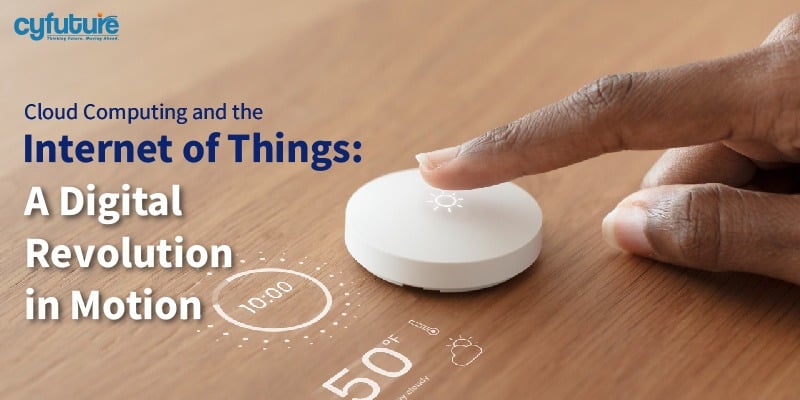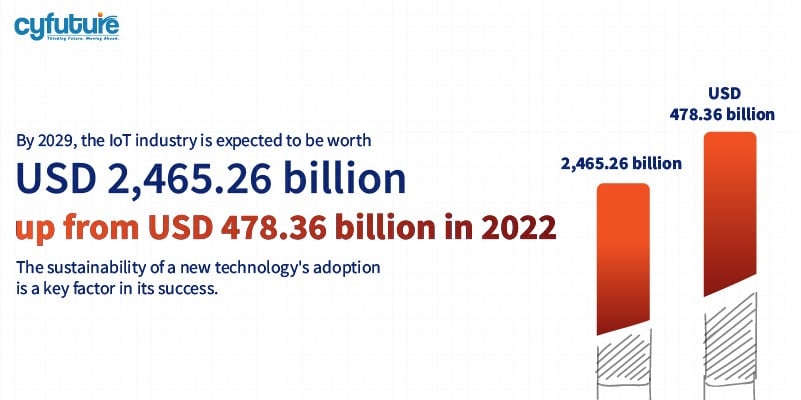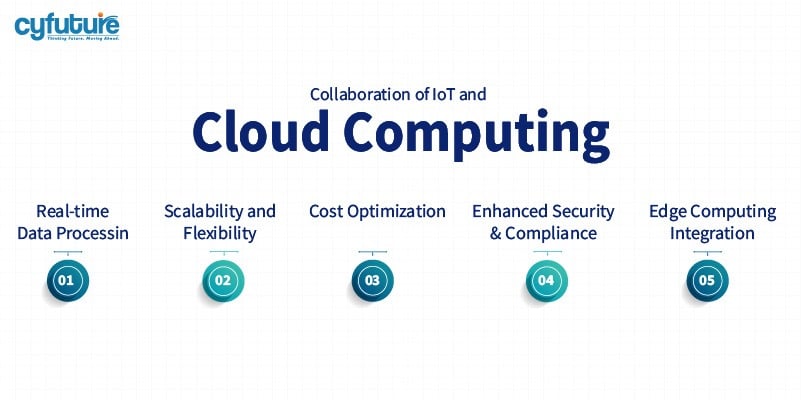-
Get Cloud GPU Server - Register Now!
Toggle navigation

IoT and cloud computing are the “next frontiers” of digital transformation in today’s world with unrelenting hyper-connectivity. Fast integration by consumers and businesses of smart devices in their daily lives creates a strong demand for resilient, intelligent infrastructure that is scalable.
At this point, cloud services step in, giving access to the processing capabilities, storage, and analytics tools one needs to deal with the colossal volumes of data generated by IoT networks.
Through this dynamic combination, businesses are using it to improve operational efficiency, expedite procedures, and provide unmatched client experiences as cloud services in India grow fast.
But what makes this convergence of IoT and cloud computing so powerful? Why is it the future, not just a fad?
In this exhaustive article, we will examine the synergy of these technologies and how they’re shaping industries. We will also discuss the unlimited possibilities they open.
However, let’s look at a few stats and data before delving deep.

Cloud computing refers to the delivery of computing resources over the Internet as an on-demand service. It provides users with scalable and flexible computing capabilities on a pay-per-use basis without their maintaining expensive, capital-intensive, and highly complex on-premise IT infrastructure.
With cloud services in India gaining momentum, enterprises are increasingly migrating to cloud environments to drive innovation, boost agility, and maximize data-driven decision-making.
The basic idea of cloud computing needs to be understood. Cloud computing is a model for delivering computing services, including storage, processing power, networking, and databases, over the Internet rather than relying on local infrastructure. Cloud services are flexible, scalable, and cost-effective, making them a must-have for businesses of all sizes.
The Internet of Things, or IoT, refers to a colossal network of physically connected devices that gather, share, and process real-time data. Some devices include wearables, smartphones, industrial sensors, home automation systems, and driverless cars. Their ability to communicate with one another is through a wireless connection and embedded sensors that contribute towards a seamless data flow towards improved automation, predictive analytics, and subsequent decision-making.
Due to the widespread use of IoT devices, businesses today generate enormous volumes of data every second. It is not practical or scalable to store, process, and analyze this data locally; in this case, cloud computing is the key enabler.

The fusion of cloud computing and IoT is not supplementary but fundamental. IoT produces data, and cloud computing gets the chance to process, analyze, and store it efficiently. It poses a self-sustaining digital ecosystem that is scalable enough to be able to:
Smart cities equipped with IoT leverage cloud services for effective public safety systems, energy usage, waste management, and traffic flow. Cloud-based IoT is transforming life in metropolitan areas like never before-from evolving surveillance networks to AI-controlled intelligent traffic control systems.
With Internet of Things powered wearable technology, the healthcare sector is revolutionizing as patient vitals are being monitored continuously. AI-powered diagnostics, cloud-enabled electronic health records, and remote patient monitoring have been improving the patient outcomes and lowering readmission rates to the hospitals and on a large scale have been helping telemedicine services.
Cloud-driven analytics and Internet of Things sensors are making smart factories possible, where manufacturing processes are changing. More yields, less downtime, and fewer operating costs are being facilitated through automated supply chains, AI-driven quality control, and predictive maintenance.
Sensors IoT in agriculture crop health, soil conditions, humidity levels data streamed to cloud platform for analysis Improvement in the use of production forecast and resource usage through precision farming insights.
The new retailing scenario is transformed through cloud-based IoT solutions by analytics of consumer behavior driven by AI and automated inventory management. A perfect shopping experience is provided through cashierless businesses, sophisticated supply networks, and personalized recommendations.
Cloud-enabled IoT powers drone-based delivery, fleet management, autonomous vehicles, and GPS-enabled smart tracking. Companies use real-time logistics tracking to improve delivery effectiveness, save fuel use, and dynamically adjust routes.
Despite its transformative potential, the integration of cloud computing and IoT comes with its set of challenges:
Solution: Advanced encryption, multi-factor authentication, and zero-trust security models mitigate risks.
Solution: Implementing edge computing reduces latency by processing critical data closer to IoT devices.
Solution: Standardized communication protocols and APIs ensure seamless device-cloud integration.
Solution: Cloud platforms offer auto-scaling mechanisms to accommodate surges in IoT data volume.
As both cloud computing and IoT continue to evolve, emerging technologies will further enhance their synergy:
With cloud services in India growing exponentially, businesses must proactively adopt IoT-cloud solutions to stay ahead in an increasingly data-driven world.
Cloud computing and the Internet of Things have a symbiotic relationship that is more than just a technology change; it is a revolution. By utilizing this combination, businesses may achieve unparalleled intelligence, efficiency, and scalability, which enables them to surpass rivals and transform client experiences.
The countless opportunities for IoT-cloud integration will influence the direction of digital transformation as businesses around the world use cloud services in India. The question is not if companies should use new technology or not, but rather how quickly they can do so to remain competitive.
To succeed in an increasingly interconnected world, organizations must embrace this digital transformation to achieve previously unheard-of levels of growth, innovation, and operational excellence. IoT-driven and cloud-powered, are you prepared to join the future?
Why is IoT dependent on cloud services?
Massive volumes of data generated by IoT devices necessitate secure storage and real-time processing. To ensure efficient operations, automation, and wise decision-making, cloud services serve as a centralized platform where this data is gathered, examined, and shared across devices.
Is cloud-based IoT secure?
Indeed, to safeguard IoT data, cloud service providers employ strong security features including encryption, multi-factor authentication, and AI-driven threat detection. To further improve data integrity and stave against cyberattacks, companies can also implement extra security measures like edge computing and blockchain technologies.
What role does edge computing play in IoT and cloud integration?
Edge computing minimizes latency and bandwidth consumption by processing data closer to the source. Cloud computing provides centralized storage and analytics, while edge computing makes sure that time-sensitive IoT functions, like industrial automation or driverless cars, happen flawlessly and without interruption.
Are cloud services in India reliable for IoT applications?
To assist IoT-driven organizations, cloud services in India have made great strides, providing regional data centers, strong security, and high availability. For businesses implementing cloud-based IoT solutions, top providers guarantee smooth and safe operations by adhering to regulatory norms.
What future trends can we expect in cloud computing and IoT?
Advances in quantum computing, blockchain security, 5G-enabled ultra-fast connection, and AI-driven automation will all influence the cloud and IoT of the future. Smarter enterprises, industries, and cities will be made possible by these advancements, which will further increase the efficiency, intelligence, and security of IoT ecosystems.